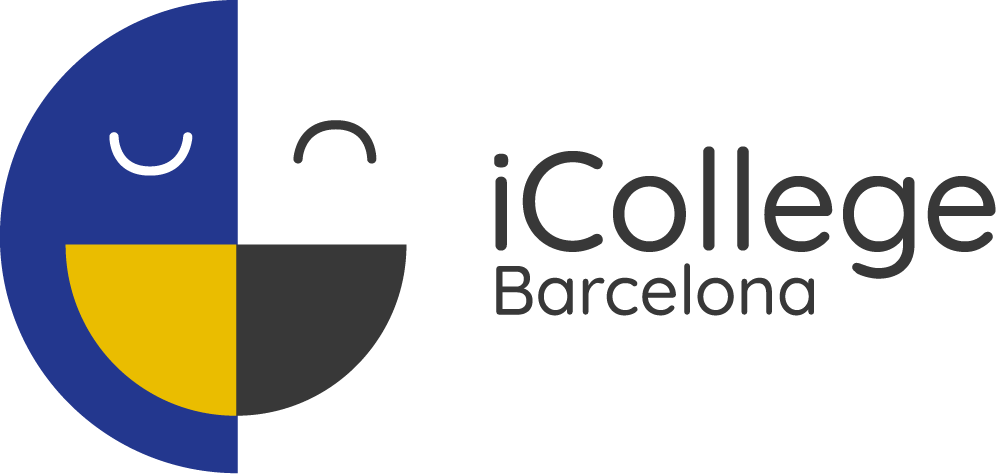The 21st-century classroom is no longer confined to blackboards, textbooks, and chalk. With the rise of technology in education, students and teachers are now part of an evolving, dynamic ecosystem that blends innovation, accessibility, and personalised learning. From interactive whiteboards and virtual simulations to AI-powered platforms and global online classrooms, education has entered a transformative era.
For both educators and students, adapting to these changes is not just beneficial—it’s essential. Digital tools are reshaping not only how students learn but also how educators teach, measure progress, and foster collaboration. This shift is creating an environment where learning becomes more engaging, inclusive, and future-ready.
Educational institutions that have embraced this evolution, such as iCollege Barcelona, exemplify how modern technology can enhance student outcomes and global connectivity. With a strong emphasis on innovation and digital literacy, they are preparing students for a rapidly changing world.
The Evolution of Technology in Education
Historically, education has been slow to adapt to change. Traditional methods often relied on rote learning, static content, and a one-size-fits-all approach. However, the rise of digital technologies has triggered a global transformation in how knowledge is delivered and consumed.
From overhead projectors to tablets and AI tutors, the evolution of classroom tools reflects a broader shift towards educational innovation. The emphasis today is on interactivity, collaboration, and real-time feedback.
This evolution is not merely technological—it’s pedagogical. Teachers are becoming facilitators of learning rather than sole providers of information, and students are now active participants, co-creating knowledge through online platforms, apps, and virtual labs.
Digital Learning Tools Reshaping Classrooms
Digital learning tools have introduced a wide array of benefits for students of all ages. These tools are designed to meet diverse learning needs and create more personalised learning environments. Some widely adopted tools and platforms include:
- Learning Management Systems (LMS) such as Moodle, Google Classroom, and Canvas
- Interactive platforms including Kahoot!, Nearpod, and Quizlet
- Virtual labs and simulations for science and engineering courses
- AI tutors and adaptive learning platforms that customise instruction based on performance
- Collaborative software like Microsoft Teams and Zoom for virtual group projects
These technologies empower teachers to:
- Monitor student progress in real time
- Provide differentiated instruction
- Engage students through multimedia content
- Offer timely feedback
- Encourage independent, self-paced learning
Such innovations are not only enhancing academic performance—they are also fostering digital literacy, a critical skill in today’s technology-driven world.
The Rise of Online Classrooms
Another significant development in modern education is the rise of online classrooms. Initially adopted as a solution for remote or distance learning, online education has now become a cornerstone of the educational experience, even in conventional institutions.
Key Benefits of Online Classrooms:
- Flexibility: Students can learn from anywhere, at any time
- Global Access: Connects students and educators from across the world
- Cost-Effectiveness: Reduces the need for extensive physical infrastructure
- Self-Paced Learning: Supports learners who prefer more time or faster progress
- Resource Integration: Embeds multimedia, quizzes, and interactive tools directly into lessons
At institutions such as iCollege Barcelona’s International High School, the use of digital platforms is deeply embedded in the curriculum. This allows students to benefit from an internationally aligned, technologically advanced education. These virtual learning environments are now core components of hybrid and blended learning models.
Educational Innovation: Preparing Students for the Future
Integrating technology in education goes far beyond convenience—it is about equipping students with the tools, mindset, and competencies they need to thrive in the future.
Key Areas of Educational Innovation:
1. Personalised Learning Paths
Technology allows for real-time assessment and dynamic content adjustments tailored to a learner’s style and pace.
2. Gamification of Learning
Gamified elements like badges, points systems, and progress bars increase engagement and content retention.
3. Augmented Reality (AR) and Virtual Reality (VR)
Immersive experiences help students grasp complex concepts and explore real-world scenarios without leaving the classroom.
4. Artificial Intelligence and Data Analytics
AI-based platforms can predict learning gaps, automate grading, and enable tailored feedback based on behavioural data.
5. Project-Based and Experiential Learning
Digital tools support collaborative, cross-disciplinary learning that mirrors real-world challenges.By embedding these innovations into daily practice, schools are shifting towards student-centred, skills-based education models that emphasise critical thinking, creativity, and lifelong learning.
Bridging the Digital Divide
Despite the advantages of digital education, not all learners have equal access to technology. The digital divide—the gap between those with access to digital tools and those without—remains a significant challenge.
Solutions Include:
- Public-private partnerships to provide low-cost internet
- Device-loaning schemes for underprivileged students
- Lightweight platforms accessible on mobile or low-bandwidth networks
Forward-thinking institutions such as those offering advanced qualifications like the A-Levels in Barcelona are also ensuring that students have equitable access to devices, software, and training—bridging educational gaps and promoting inclusion.
The Evolving Role of Teachers in a Digital Age
While technology facilitates change, teachers remain essential to the learning journey. Their roles have evolved, but their importance is greater than ever.
Today’s Teachers Are:
- Tech Mentors: Guiding students in the safe, effective use of digital tools
- Learning Facilitators: Promoting active enquiry rather than passive reception
- Emotional Anchors: Providing wellbeing support, especially in virtual environments
- Lifelong Learners: Adapting continually to new technologies and pedagogies
Ongoing professional development is key. Workshops and events such as those offered at iCollege Barcelona’s innovation events help educators integrate modern digital tools meaningfully into their teaching methods.
Technology in Education: Challenges and Responsible Use
While the benefits are clear, integrating technology in education must be approached with caution and responsibility.
Common Challenges:
- Screen Fatigue: Excessive screen time can affect mental health and physical comfort
- Distraction Risks: Digital tools can sometimes lead to reduced focus
- Data Privacy: Safeguarding student information is a top priority
- Access Inequality: Uneven access to digital resources can widen achievement gaps
Educational leaders must establish balanced tech usage policies, implement strong data protection measures, and nurture healthy digital habits across the school community.
Looking Ahead: The Future of Education Technology
The next frontier for technology in education lies in deeper personalisation, expanded global collaboration, and the seamless integration of advanced tools like AI and blockchain.
Emerging Trends Include:
- AI-powered tutoring and virtual assistants
- Global collaborative classrooms fostering intercultural communication
- Blockchain credentials ensuring secure verification of academic records
- Predictive analytics to anticipate student performance
- Early integration of robotics and coding in primary education
Institutions like iCollege Barcelona are at the forefront of this transformation, offering students a flexible, future-focused education designed to meet the demands of an interconnected, rapidly changing world.
Final Thoughts: Purposeful Technology for Powerful Learning
Technology should not replace effective teaching—it should amplify it. The goal is not to chase trends but to integrate digital tools in ways that enhance learning, inclusivity, and student success.
By leveraging digital learning tools, developing robust online classroom strategies, and fostering educational innovation, today’s schools can create rich, adaptable environments where every student thrives.
If you’re exploring technology-led programmes or want to discover how your educational path can align with future innovation, reach out via iCollege Barcelona’s contact page.
FAQs: Technology in Education
How does technology improve learning outcomes?
Technology boosts student engagement, allows for personalised learning, and offers real-time feedback—resulting in better academic achievement.
Are online classrooms as effective as traditional ones?
Yes. When thoughtfully designed, online classrooms offer flexibility and access while maintaining academic rigour and community.
What are the most commonly used digital learning tools?
Google Classroom, Kahoot!, Zoom, and virtual lab simulations are widely adopted for interactive and collaborative learning.
How can schools promote digital equity?
By supplying necessary devices, offering connectivity solutions, and creating low-bandwidth educational platforms to reach every learner.
What lifelong skills do students gain from technology integration?
Digital competence, problem-solving, adaptability, collaboration, and independent learning—all crucial for the modern workforce.



